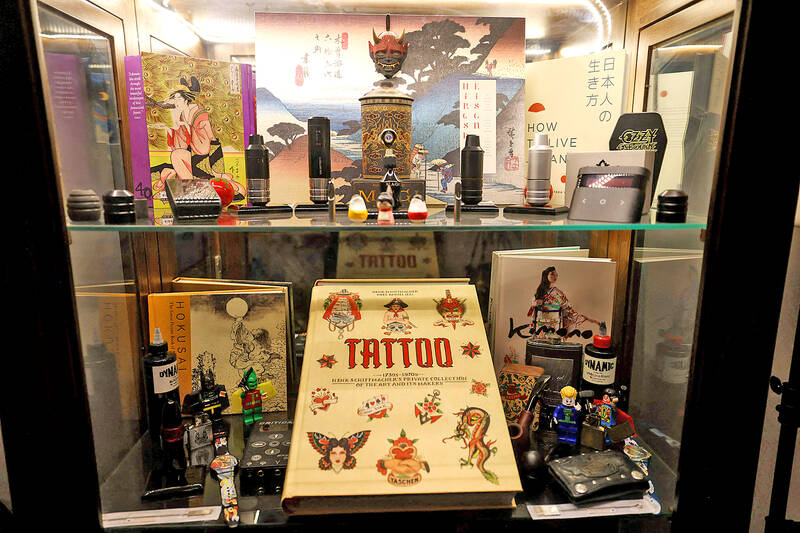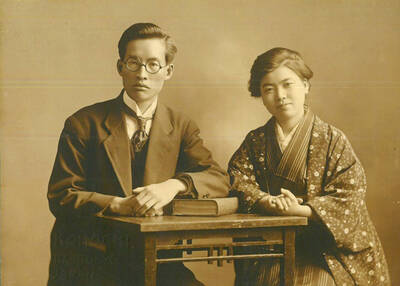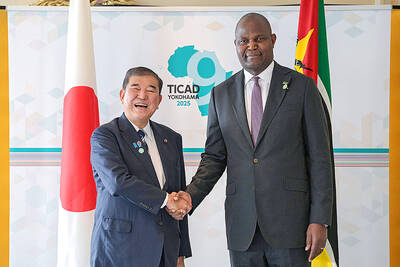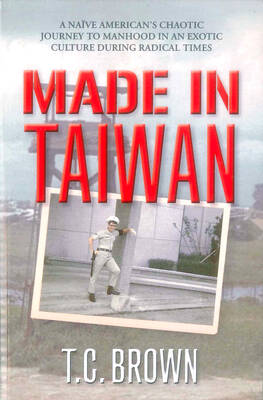Within a flat in northern Tehran, concealed from the public eye, Sean proudly showcases the tattoo motifs crafted by his students, each meticulously etched onto silicon canvases.
The 34-year-old opened the studio only eight months ago, aspiring to share the art of tattooing that over the years has largely thrived underground in the Islamic republic.
“All tattoo artists in Iran usually work at home,” Sean, using his artistic nickname, said in his studio.

Photo: AFP
“We risked a lot this year by opening this place and turning it into an academy.”
While Iran has not explicitly banned tattooing, conservatives still view the practice as linked with immorality, delinquency and Westernization.
Yet tattoos have gained popularity in recent years in the country, with many young people proudly displaying their ink in public.

Photo: AFP
Seeing the growing trend, Sean opened other studios in the southeastern city of Kerman and the resort island of Kish.
Now, he has more than 30 students eager to learn the craft, which he describes as a “bottomless art.”
“All sorts of people now are doing tattoos,” said Sean, who has been a tattoo artist for 17 years.
In the past, he said, “people wanted something small, simple, that no one can see.”
“But now they’re saying ‘Ink me up.’”
‘SATANIC AND OBSCENE SYMBOLS’
In recent years, some Shiite scholars in Iran have declared that tattoos are not forbidden under Islamic law.
“Tattooing is not forbidden, provided that it does not promote non-Islamic culture,” according to the website of Iran’s supreme leader, Ayatollah Ali Khamenei.
Despite the growing acceptance, there are still some in Iran who frown upon the practice.
In September last year, Iran’s volleyball federation said players must cover any tattoos or risk being barred from taking part in the 2022-2023 season.
Several prominent football players faced summons to Iran’s sports morality committee in recent years for displaying their tattoos.
In 2019, a Tehran police official said having “visible and unconventional tattoos” may require individuals to undergo a “psychological examination” before obtaining a driver’s license.
Others faced arrest, including in 2016, when authorities rounded up a “tattoo gang” for allegedly tattooing “satanic and obscene symbols” on people, as reported by the Tasnim news agency.
Benyamin, a 27-year-old cafe owner, says some people often perceive him as a criminal because of the tattoos covering his torso and back.
“Tattoos are not a crime on their own, but you will be stigmatized as a thug, should something happen,” like being arrested, he added.
Sean says he is aware of the conservative societal and cultural perceptions in Iran, aspects he has conscientiously addressed within his studios.
“Women do tattoos for women, men do tattoos for men,” he said.
‘WOMEN, LIFE, FREEDOM’
In Iran, women with tattoos face more intense scrutiny than their male counterparts, compelled to adhere to a stringent dress code that mandates covering their heads and necks.
Some even see it as an act of defiance.
In Tehran, numerous tattoo studios showcased designs featuring the slogan “Woman, life, freedom” — a rallying cry during nationwide protests sparked by the death in custody last year of Mahsa Amini.
A 22-year-old Iranian Kurd, Amini had been arrested in September 2022 for allegedly violating the Islamic republic’s strict dress code for women. Others only see it as a form of self-expression.
“I like tattoos a lot and I wanted to express my thoughts that way,” says Sahar, a 26-year-old nurse who has a tattoo on her arm reading “do not be afraid of anything” in Arabic.
But she acknowledges that having tattoos “is likely (to cause problems), especially if you want to work in the public sector”.
Undeterred by the challenges, Kuro, a 24-year-old student at the studio, remains steadfast in her determination to practice her craft.
“Now people are generally more supportive,” she said after touching up a Koi fish design etched on a silicon sheet.
She hopes that “as a woman tattoo artist, I will be able to work without restrictions.”

Aug. 25 to Aug. 31 Although Mr. Lin (林) had been married to his Japanese wife for a decade, their union was never legally recognized — and even their daughter was officially deemed illegitimate. During the first half of Japanese rule in Taiwan, only marriages between Japanese men and Taiwanese women were valid, unless the Taiwanese husband formally joined a Japanese household. In 1920, Lin took his frustrations directly to the Ministry of Home Affairs: “Since Japan took possession of Taiwan, we have obeyed the government’s directives and committed ourselves to breaking old Qing-era customs. Yet ... our marriages remain unrecognized,

During the Metal Ages, prior to the arrival of the Dutch and Chinese, a great shift took place in indigenous material culture. Glass and agate beads, introduced after 400BC, completely replaced Taiwanese nephrite (jade) as the ornamental materials of choice, anthropologist Liu Jiun-Yu (劉俊昱) of the University of Washington wrote in a 2023 article. He added of the island’s modern indigenous peoples: “They are the descendants of prehistoric Formosans but have no nephrite-using cultures.” Moderns squint at that dynamic era of trade and cultural change through the mutually supporting lenses of later settler-colonialism and imperial power, which treated the indigenous as

An attempt to promote friendship between Japan and countries in Africa has transformed into a xenophobic row about migration after inaccurate media reports suggested the scheme would lead to a “flood of immigrants.” The controversy erupted after the Japan International Cooperation Agency, or JICA, said this month it had designated four Japanese cities as “Africa hometowns” for partner countries in Africa: Mozambique, Nigeria, Ghana and Tanzania. The program, announced at the end of an international conference on African development in Yokohama, will involve personnel exchanges and events to foster closer ties between the four regional Japanese cities — Imabari, Kisarazu, Sanjo and

By 1971, heroin and opium use among US troops fighting in Vietnam had reached epidemic proportions, with 42 percent of American servicemen saying they’d tried opioids at least once and around 20 percent claiming some level of addiction, according to the US Department of Defense. Though heroin use by US troops has been little discussed in the context of Taiwan, these and other drugs — produced in part by rogue Chinese Nationalist Party (KMT) armies then in Thailand and Myanmar — also spread to US military bases on the island, where soldiers were often stoned or high. American military policeman